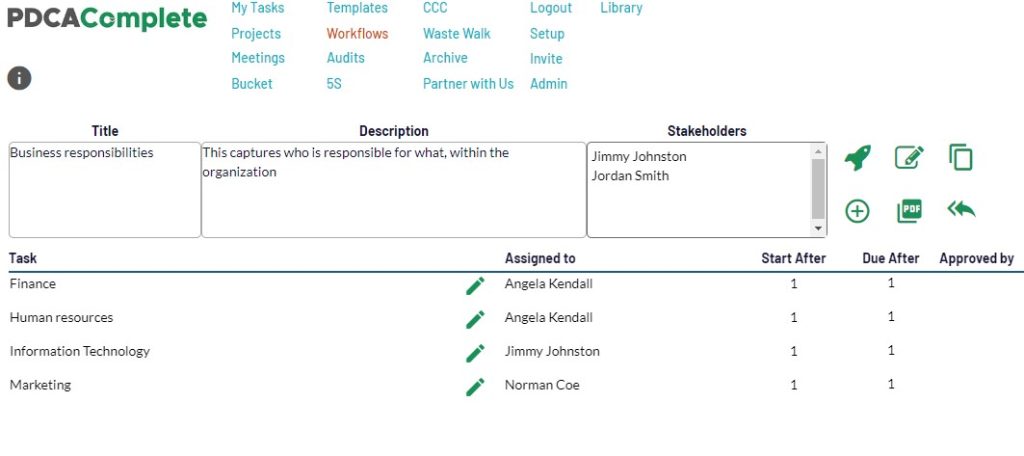One of the age old challenges in business is clarifying who is responsible for what. When something goes wrong, who needs to step up and pick up the pieces?
Defining responsibilities for processes, for tasks, systems and physical locations all come under this topic. A lack of definition around this can create confusion in the business when it matters.
Although PDCA Complete wasn’t designed to specifically deal with this challenge, it can offer a number of solutions.
Using the templates function
As well as storing tasks for later use (that can be issued on a recurring basis), this area of PDCA Complete can be used to list of functional areas and who is responsible.

In this module you create a library of responsibilities, that you can click into to see the notes on what was agreed. Attachments can also be added if there are agreements / schedules to be included in the responsibility.
Using workflows
The digital workflow tool is another part of the system where you could store the records of who is meant to do what in the business. Normally this section of PDCA Complete is used to replicate your real world processes as a digital checklist, assigning tasks to each person in the chain based on the amount of time you have allocated to them.

In this use case, we can list areas of responsibility against the individuals. It wouldn’t be intended that you would launch the workflow, but it does offer a really quick way to capture the functional responsibilities.
Using the audits tool
The audit functionality in PDCA Complete is great for capturing standards and then reviewing against them. You can use this module to capture business responsibilities too.

Again, you can capture this information easily and review it with a few clicks. Editing and updating this information is carried out quickly, via the pencil icons.
Controlling the information
All of these options, in fact every module in PDCA Complete, is permission controlled. Only those that you want to share the information with can access it.
I hope that this article has given you some food for thought and showed you some of the versatility of PDCA Complete.
If you haven’t already started with PDCA Complete, don’t forget that you can access a free account when you want to here.